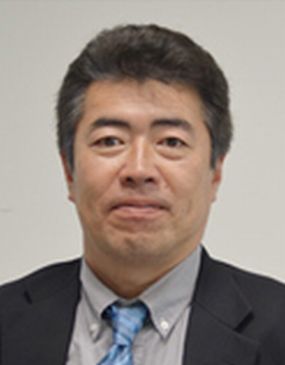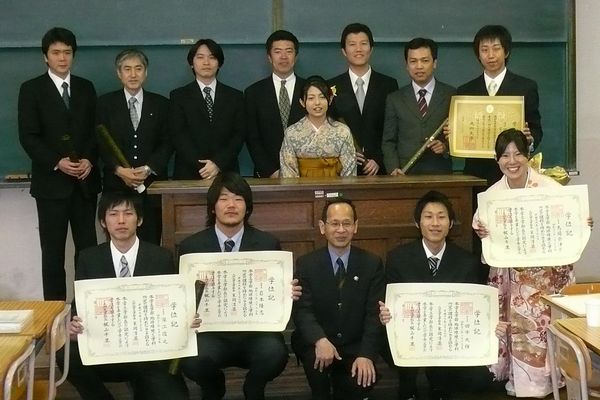IAC News
IAC News No.69, July 2018
Japan Society of Civil Engineers International Activities Center July 2 2018 IAC News No.69
“The Asian Civil Engineering Coordinating Council (ACECC) 34th Executive Committee Meeting in Hanoi” Committee on ACECC, Japan Society of Civil Engineers
1. Overview
The Asian Civil Engineering Coordinating Council (ACECC) 34th Executive Committee Meeting was held from April 12 through 14, 2018 in Hanoi, Vietnam. The main proceedings of the plenary meeting were as follows.
2. Activity report of ACECC Technical Committee
The activities of all nine committees that are currently under way were reported, and the contents of the report were approved. Among those activities, a report on T16 (Technical Committee concerning ITS for resolving urban city traffic problems) and TC21 (Technical Committee concerning disaster reduction/prevention), in which Japan plays a leading role, was delivered. With regard to TC21 in particular, Chairman Kuniyoshi Takeuchi attended the committee to present an overview of the activities so far.
In the 34th Executive Committee Meeting, the Philippine Institute of Civil Engineers (PICE) made a proposal on the establishment of the new Technical Committee “TC-24: Technical Committee on Gender and Development in Infrastructure”, and the proposal was approved.
On the final day of the Meeting, TC14 “Sustainable Infrastructure” and the above-mentioned TC21 jointly held an international symposium, where local engineers and participants from ACECC member countries engaged in lively discussion and exchanged information.
3. CECAR8 in Tokyo Progress Report
(1) Progress
In the Executive Committee Meeting, Chairman Sato (Chairman of Science Department, Local Organizing Committee for CECAR8) of the Committee on Asian Civil Engineering Coordinating Council reported on the progress of preparations toward CECAR8 to be held in Japan from April 16 through 19, 2019. Matters to be reported are as follows.
– Approximately 300 abstracts have been posted.
– The Presidential Meeting of presidents of ACECC member organizations will be held on April 16.
– The Future Leader Forum of young engineers will be held.
– Simultaneous interpretation will be provided for the Keynote Lecture
– Young engineers and female engineers will be welcome.
– The ACECC Executive Committee Meeting will be held on the day before CECAR8
Many engineers from Japan are also expected to participate in CECAR8.
(2) Tokyo Protocol
CECAR8 will be held in 2019, which marks the 20th year since the establishment of ACECC. In CECAR8, the Tokyo Protocol will be stated in the name of all the presidents of ACECC member organizations, considering the changes in the world situation and our experience in disasters during those years. A draft was presented at the 34th Executive Committee Meeting, and will be finalized at the next Meeting after reflecting the comments of each academic society.
4. The way forward for the organization of ACECC
The previous 33rd Executive Committee Meeting in Ulan Bator approved “the accession of more than one society/institution from an economy* is approved, while only one vote from an economy is approved.” Discussions on the biannual ECM, which will be held in the selected countries, and the Membership Meeting (MM), in which all member countries participated, are being made.
In the 34th Executive Committee Meeting, the time of the transition to the new framework was discussed, and it was decided by majority vote that the transition will be carried out when the number of participating organizations exceeds 20. The decision-making process of ACECC, whose organization will become bigger, is expected to be smoother if the new framework is introduced.
5. Future Leader Forum
The Future Leader Forum (FLF) is an event that was proposed and approved in the 31st Executive Committee Meeting. Young engineers of member academic societies/institutions around the age of 30 are invited to attend the Forum. Its purpose is to provide the opportunity to freely discuss new ideas such as the way forward for civil engineering. It was not held in the 34th Executive Committee Meeting, but the future policies were discussed. The following policies were approved:
– FLF will be held once every 12 to 18 months.
– Travel expenses of participants of FLF will be borne by each member society/institution, and
accommodation fees by the host society. In principle, ACECC will not bear those expenses.
FLF is planned for CECAR8, which is held at the same time as the 36th Executive Committee Meeting. Therefore, FLF will be not held in the next ECM in Melbourne.
6. CECAR9
The Institution of Civil Engineers, India (ICE, India) is running to serve as the host organization of CECAR9, which will be held in 2022. A presentation on its content was made at the Executive Committee Meeting and was approved. As a result, it has been decided that CECAR9 will be held in Goa, India. After CECAE8, ICE, India will take over the role of the ACECC administration from JSCE.
7. Conclusion
This was the third Executive Committee Meeting since the ACECC administrative organization changed to JSCE. During the meeting, discussions were held on how ACECC should be led by JSCE so that ACECC can conduct its activities more effectively, and reforms are steadily being carried out. Less than one year remains until CECAR8 in 2019, and JSCE is in charge of administration only for a year. It is expected that the reforms led by JSCE will be smoothly taken over by the ICE, India, which is the next administrative organization.
The next Executive Committee Meeting will be held in Melbourne, Australia in October.
Note – Economy: general term for countries and regions
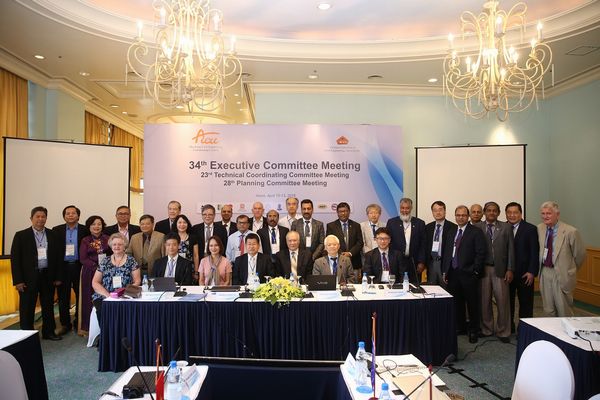
All participants of Executive Committee Meeting
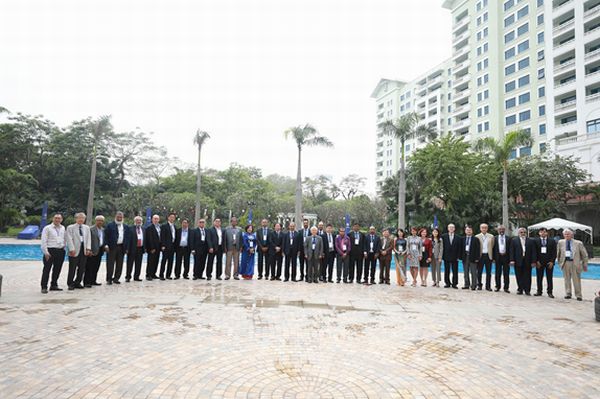
In the courtyard of the venue Hanoi Daewoo Hotel
【Reported by Committee on ACECC, Japan Society of Civil Engineers】
Report of ACECC TC21 Field Survey and Symposium in Vietnam
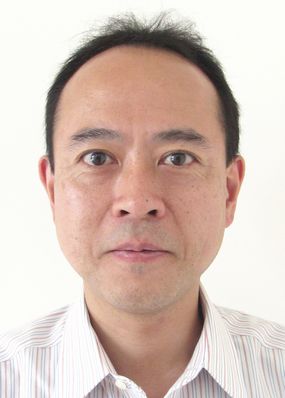
Yoshihiro Katsuhama
(Secretariat of ACECC TC21 Support Committee, JSCE)
The 21st Technical Committee (TC21) of ACECC, with the Co-chairs Dr. Kuniyoshi Takeuchi and Mr. Romeo S. Momo, has been aiming for building disaster-resilient society under the initiative from Japanese Society of Civil Engineers (JSCE). On April 2018, in parallel with the ACECC Executive Committee Meeting (ECM) held in Hanoi, the TC21 activities took place in Vietnam: a field survey, committee meetings, and an International Symposium.
At the field survey in the Nam Dinh Province with severe coastal erosion (see Photo 1), the current condition of damages was identified, and then there was a discussion with the local government regarding disaster mitigation (see Photo 2). In Vietnam with its long coastline, there is the severe problem of rapid coastal erosion due to the reduction of sediment supply from rivers and the construction of inadequate structures along the coast. In addition, negative impacts on the utilization of coasts for tourism and an everyday life due to the coastal erosion have been expanding because of a vertically segmented administrative system, and a lack of basic knowledge and regulations regarding coastal management. Therefore, the implementation of drastic problem-solving measures are needed.
In Hanoi, committee meetings were held by TC21 members from ACECC member states, and it was agreed to create deliverables toward CECAR8 based on each state’s case studies. Also, the third TC21 International Symposium (see Photo 3) was held inviting the ECM members and local participants, following the first symposium in Davao, the Philippines in 2016, and the second symposium in Katmandu, Nepal in 2017. Following an opening address by the representative of Vietnam Federation of Civil Engineering Associations (VFCEA), and an opening address by the Director General of the Vietnam Disaster Management Authority, there were presentation sessions to introduce disaster management practices from Vietnam (the first session) and transdisciplinary approach (TDA) case studies form TC21 member states: Indonesia, the Philippines, Pakistan, Nepal, Japan, Bangladesh, and Taiwan (the second session). Then, an active discussion, chaired by Dr. Takeuchi, the TC21 Co-Chair, was conducted, and it was confirmed as the outcome of TC21 activities for two and a half years that TDA for disaster prevention and mitigation is effective and indispensable.
A financial support from ACECC was utilized for the TC21 activities in Vietnam. Also, the activities of JSCE TC21 members were supported by subsidy from JSCE International Scientific Exchange Fund (ISEF).
Moreover, the TC21 activities in Vietnam were held with strong support from Dr. Pham Hoang Kien and Dr. Mai Quang Huy, TC21 members and faculties from the University of Transport and Communications. I would like to express my gratitude for all the people who supported the activities.
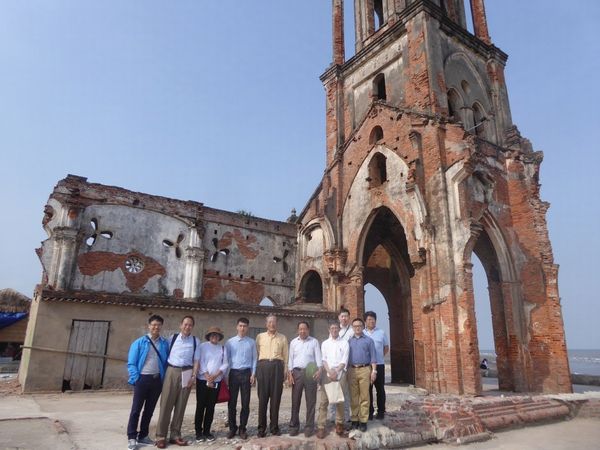
Photo 1: A church ruined by coastal erosion and typhoon, Hay li, Nam Dinh Province, Vietnam
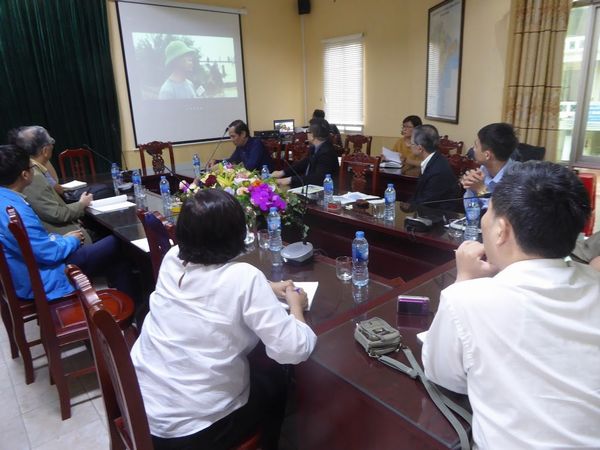
Photo 2: Discussion with officials at Agricultural Department, Nam Dinh Province
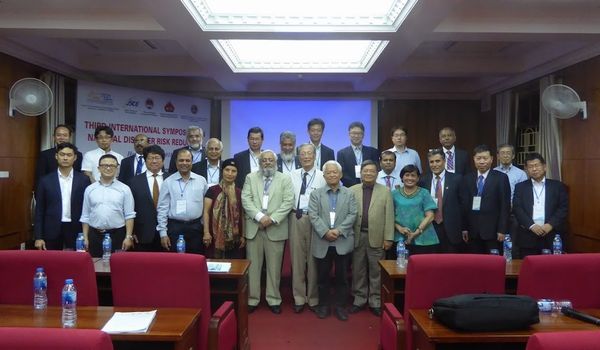
Photo 3: Major Participants of TC21 Third International Symposium
【Reported by Yoshihiro Katsuhama, Secretariat of ACECC TC21 Support Committee, JSCE】
【Alumni of DOBOKU Series】
“Expansion of Academic Network in Japan into Indonesia”
Ibrahim Djamaluddin,
Public Servant and Lecturer at the Department of Environmental Engineering, Faculty of Engineering, Hasanuddin University
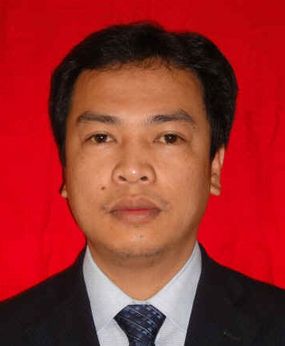
Ibrahim DJAMALUDDIN
Hasanuddin University
It is my great honor and pleasure to be nominated as the writer of Alumni of Doboku. I came to Japan for the first time in 2001 as a research student, and studied about the current conditions of geo-environmental issues at the laboratory of Environmental Geotechnology of Kyushu University. In 2002, I entered a master’s course at same laboratory, and I conducted the fundamental research on the development innovative methodology for three-dimensional prediction of ground subsidence due to underground resource development. The challenge was how to establish a computational program of prediction system using the technology of Geographical Information System (GIS). As we know that in Indonesia, there are many vast underground natural resources such as coal mine in Kalimantan, gold mine in Papua, nickel mine in Sulawesi that causes severe environmental issues which needs a powerful prediction tool. It was a very interesting research theme and this issue is challenging me to study in Japan. In the doctoral course, I accomplished the advanced research on the development of integrated supporting system within GIS throughout a collaboration work between the GIS research group and geoenvironmental research group in Kyushu University. To gain a deeper understanding about GIS, I got an opportunity as an internship for 3 months at the Environmental System Research Institute (ESRI) in Redlands, California to discover the latest GIS technology. After I studied and expanded the research network with ESRI, I was able to do the innovative development system and obtained fruitful results, and finally I received my PhD degree in 2007. Having a doctoral degree, I continued to study as a Postdoctoral Research Fellow in Kyushu University and contributed to the global research projects on the environmental conservation issues of underground coal mines in China, Vietnam, Indonesia and Japan.
From 2009, I was awarded an assistant professor of Global Center of Excellence (GCOE) program of Kyushu University, and I also worked as an International researcher on the ecological conservation project in Asia. I participated in the development of research network with the universities, non-governmental organizations (NGO), governmental organizations inside Japan and other Countries. Participation in the AP-BON (Asian Pacific Biodiversity Observation Network) is an example of one exciting time that I spent as the person in charge for geospatial information database and earth observation remote sensing study (Photo 1). After finishing the GCOE program in 2014, I decided to return country because my hometown university has already invited me to join the almamater.
Industry-Government-University collaboration work
Since 2007, JICA (Japan International Cooperation Agency) has implemented the development project of the Faculty of Engineering of Hasanuddin University. Faculty of Engineering has improved much and produces a better quality of educational and research environment as well as new building of Centre of Technology (COT).In 2015, I and some researchers who obtained doctoral degree in Japan was able to initiate the joint research which uses the Japanese network to setup the collaboration model between industry, government, and university in Hasanuddin University. In cooperation with the local Ministry of Public Works and local industries as well as Japanese company, we did a suitability research for Japanese technological products in order to promote the acceleration of water infrastructure development in Indonesia. It was the first time in my research in Hasanuddin University. Under the supervision from Professors of Civil Engineering of Kyushu University, our joint research activity smoothly can be conducted. Precast concrete products which carried from Japan were examined successfully in our laboratory (Photo 2). International seminar was held to publish our research results, and to share our findings about the importance of accurate design and construction suitable for future civil engineering industry in Indonesia. Local governments and industries in Indonesia have gained much interest in Japanese precast concrete products.
Coordinator for International Undergraduate Program of Civil Engineering
Since 2017, the International Undergraduate Program of Civil Engineering was established in Hasanuddin University with the aim of promoting global education and establishing base facilities for collaboration activities between industry and university. It is initiated to take a collaboration research and international lectures at the Department of Civil Engineering, Kyushu University where the agreement letter has been signed. I was elected to be coordinator for this program where the fourth year of undergraduate students of Hasanuddin University will conduct an International lecture courses as well as join the research activity at Kyushu University for 6 months.
Contribution to urban planning and management by GIS utilization
Problems of urban drainage management during the rainy season is very important in Makassar City due to lack of flood control for complex spatial system. Since I had learned at Kyushu University how to improve the local government skills and knowledge in the utilization of spatial technology, thus I planned the initiative program of capacity building to city government staff for the use of GIS to drainage management. In 2017, I presented my framework idea in front of Mayor of Makassar City to propose the high utilization of geospatial data in particular urban planning and management and demonstrated the use of GIS covers studies on various topics in the field of urban development in Japan. In collaboration with Japanese company who has a GIS technology, city government already stimulated the GIS project to the central government for budget approval.
In the last word, I hope to keep broadening networks and exchanges with researchers and engineers on civil engineering in Japan, so I can contribute as a bridge linking Indonesia and Japan.
Profile: Born in 1975 in Indonesia. He returned back to Indonesia in 2014 after receiving a doctoral degree in 2007 and working as an assistant professor at Kyushu University until 2014. Since 2015, he has worked as a public servant and lecturer at Hasanuddin University, Makassar, Indonesia.
|
《Column》 Yasuhiro MITANI, Professor, Kyushu University
Dr. Ibrahim has been a good research fellow and has worked together for more than 10 years from the time of his research student until he returned to his own country in 2014. After his doctoral degree graduation, he has been a great support to our research groups in laboratory. Furthermore, Professor of Esaki trusted him to carry out a lot of research findings. After going back to his own country, he continues to do collaborative research works with our university. He has recommended many international students from Indonesia. He is working hard with good at Japanese skills which can dominate the excellence young researchers. In our laboratory, the students usually called him by nickname of "Ibe-san". We hope that Dr. Ibrahim to be able to make a great success as a bridge between Japanese and Indonesian engineers.
With colleagues in his doctoral degree graduation (Dr. Ibrahim at upper line second from the left)
|
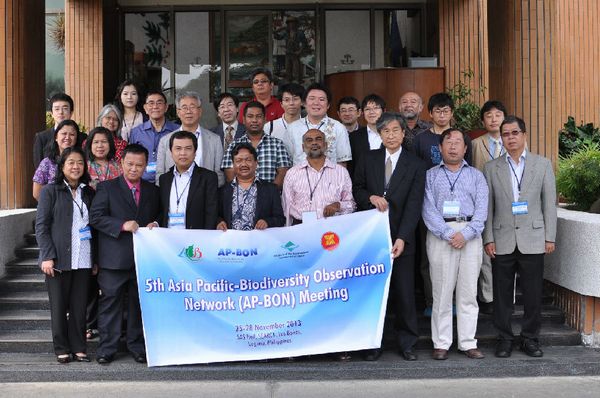
Photo 1: Members of AP-BON
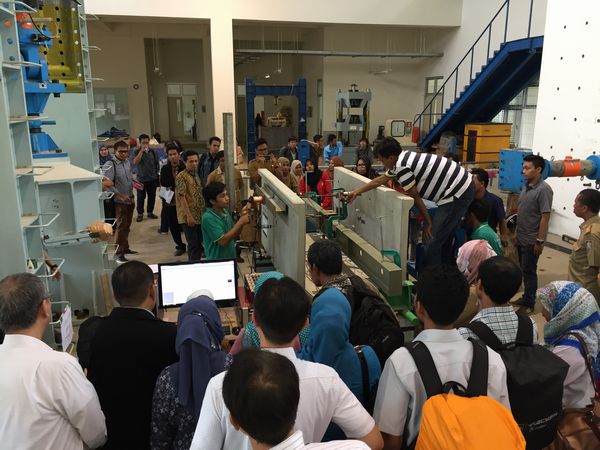
Photo 2: Experimental test of Japanese concrete product by industry government-university research scheme
※Alumni of DOBOKU Series is in collaboration with Editorial Committee of JSCE Magazine.
Dobohaku, Online Museum of Civil Engineering
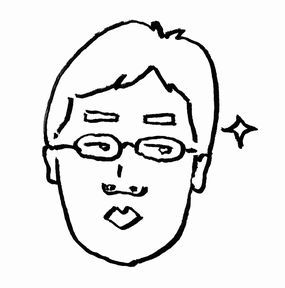
Daijiro Kitagawa
Chair of "DOBOHAKU"
Sub-Committee
The Japan Society of Civil Engineering launched Dobohaku, an online museum of civil engineering (http://www.dobohaku.com), on August 8, 2016. This is a new type of museum that exists only on the internet, and it is the first museum in Japan that covers all fields of civil engineering.
Over 500,000 PVs and 3,000 Facebook shares in the 18 months since the launch of the site indicate that many visitors have visited Dobohaku. The English version launched on February 8, 2018.
Originally, the Japan Society of Civil Engineering envisaged the construction of an actual museum where exhibitions related to civil engineering would be held. However, civil engineering constructions are so big that no museum could hold them. Moreover, such structures are attractive in the grandeur of nature and the hustle and bustle of the city where people come and go. That’s why, with the catch phrase “A journey to find ‘great capabilities’ of Tokyo”, we decided to consider the Earth as a museum of civil engineering, using our original video works, valuable illustrations, and intriguing maps that visualize the real site.
The major characteristics of Dobohaku include the pursuit of a new playful perspective and expression that stimulate the intellectual curiosity and imagination of visitors.
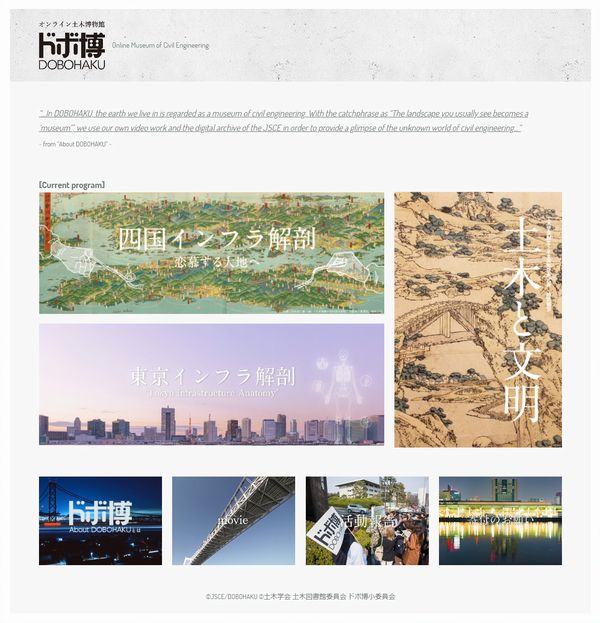
Top page of an online museum “DOBOHAKU”
【Reported by Daijiro Kitagawa, Chair of "DOBOHAKU" Sub-Committee】
Updates
-
◆Japanese Civil Engineers the Global Leaders Symposium Series No.12 July 19, 2018.
http://committees.jsce.or.jp/kokusai/node/129
◆Online Museum of Civil Engineering “DOBOHAKU –Tokyo Infrastructure Anatomy –” (English ver.)
http://www.dobohaku.com/tokyo/en/
◆CECAR8 Online Registration (Early Bird): June 1 – Jan 31, 2019
http://www.cecar8.jp/
◆2018 JSCE Annual Meeting International Program in Hokkaido, August 29 and 30, 2018
The 20th International Summer Symposium;“When a Mega Disaster Strikes... - How would you respond if you were a mayor? -”
http://committees.jsce.or.jp/kokusai/
◆The International Infrastructure Archives– A Compilation of Japan’s Greatest Projects in Transfer of Civil Engineering Technology in Service –
http://www.jsce.or.jp/e/archive/
◆Asian Civil Engineering Coordinating Council (ACECC) International Newsletter archives
http://www.acecc-world.org/newsletter.html
◆IAC “News Pick Up!!” on the JSCE Japanese website
http://committees.jsce.or.jp/kokusai/node/118
◆Summary of feature articles in JSCE Magazine Vol. 103, No. 6, June 2018 on the JSCE website
http://www.jsce-int.org/pub/magazine
◆Journal of JSCE
https://www.jstage.jst.go.jp/browse/journalofjsce
◆IAC Students and Alumni Network
http://www.jsce-int.org/IAC_network
IAC News Subscription
The IAC News is one of the communication tools to share information and ideas with the members. We would like to invite you, your friends and colleagues to join the communication and to subscribe the IAC News. Please register online: (http://www.jsce-int.org/node/150). We look forward to meeting you.

